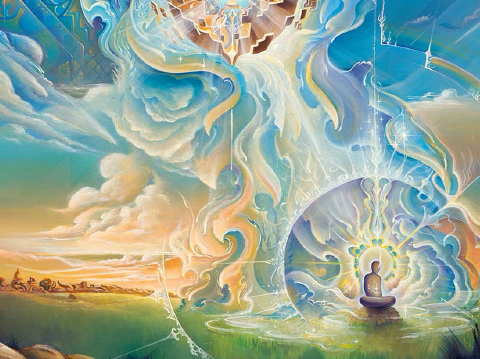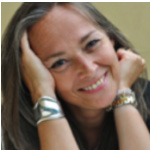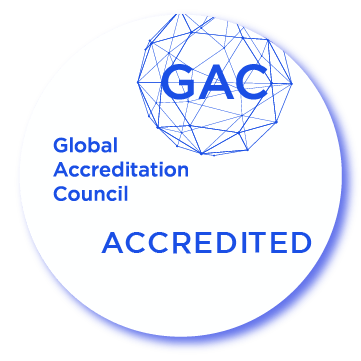
Course Description:
In this course we examine the essential teaching of Hinduism, Buddhism, Daoism and Christianity. What were the origins of these four Spiritual Traditions? And how far were these teachings understood by those who developed religious institutions in their name? Of the four Traditions, Buddhism seems to have maintained its influence, which has recently spread widely in the West. Hinduism has ceded to Islam in Indonesia but is still strongly embedded in India. Christianity has largely lost its influence in Europe but is gaining strength in Africa. It has been effectively eliminated in the Middle East where the recent persecution of Christians by Muslim states has been rife.
Session One: Hinduism
Hindus regard their religion as the oldest in the world and its inception can be traced to the civilization of the Indus Valley ca. 3,000 BC. Hinduism arose out of a fusion of indigenous beliefs and practices which were largely animistic, and the practices and beliefs of the Aryan invaders of India who arrived between 2000 and 1500 BC, bringing with them the caste system and a priesthood called Brahmans and a supreme god called Brahman, although there are many other gods and goddesses whose influence continues until the present time. There is no written record of a specific founder of Hinduism but there is a tradition of seers or rishis who have continuously transmitted sacred writings dating back thousands of years – even to the time before the Great Flood. These sacred texts were highly revered and passed down through a succession of enlightened teachers, among them a man called Patanjali.
The earliest of these texts were known as the Vedas, dating to around 2000 to 1500 BC. The best-known texts are the later Upanishads (600-300 BC) and the Bhagavad Gita (The Song of the Lord) which forms part of the mammoth Hindu epic, the Mahabharata. The core teaching of the Upanishads is the presence of the Atman, or divine self within each individual human being. The second core teaching is that this indwelling divine self is one with the supreme creative power, Brahman. The task of the individual is to transcend the control of the ego in order to experience this union. The subtlety and sublime beauty of these writings is incomparable. As the Chandogya Upanishad describes it, ‘This is my Self within my heart, greater than the earth, greater than the sky, greater than all worlds. This is Brahman.’ There is no dualism in this religion: the macrocosmic Brahman and the microcosmic Atman are one and the same. The essential focus of the Upanishadic sages was to explore the relationship between man and the universe.
Hinduism was carried to Indonesia in part by the great sculptors who gave it form in countless images, enriched with the rich fauna and flora of India that were never excluded from the worship of the pantheon of deities who still preside over the life of countless millions of Indians today. The elephant-headed god, Ganesh, is one of the best known and loved deities in the Hindu pantheon of gods and his origin may go back to pre-Aryan times.
Session Two: Buddhism
The beginnings of Buddhism are clear. It arose from the teachings of the Buddha (Siddhartha Gautama 560-480 BC) who was born into an aristocratic family in a small town near the borders of Nepal in the sixth century BC. Leaving his parents, wife and young son, he renounced his heritage and, at the age of twenty-nine, embarked on the life of a wandering ascetic for six years, eventually renouncing asceticism and attaining the state of ‘enlightenment’ when seated in contemplation beneath a bodhi tree: “Ignorance was destroyed, knowledge had arisen… as I sat there, earnest, strenuous, resolute.” Moving to Benares, he gave his first sermon there on the Four Truths: on sorrow, the cause of sorrow, the cessation of sorrow and the way that leads to its cessation. Soon disciples flocked to him. He continued to teach until he was 80. The emphasis of his teaching was on the development of compassion for all living things. He told his followers to “believe nothing until you know it to be true from your own experience.”
Living in a society which was rigidly divided into castes and where the poor lived in indescribable poverty, he developed a teaching based not on belief but on self-inquiry: a teaching that was applicable to all, no matter what their caste. He contrasted the state of consciousness directed by the ego that he called ‘samsara’ with the enlightened state that he called ‘nirvana’; giving people the practices which could help them move from the ego-bound state grounded in survival instincts to the state that was released from the control of these instincts. These practices were summarised in his formulation of the Noble Eight-fold Path.
Buddhism did not replace Hinduism in India but spread rapidly throughout Asia and into Tibet, where it fused with the ancient shamanic practices that had long existed there. It reached China and Afghanistan via the Silk Road. It reached Japan from China. Everywhere it took root, it inspired the most marvelous sculptures as well as frescoes painted on cave walls. The gigantic sculptures of the Buddha at Bamiyan in Afghanistan (now restored after being destroyed by the Taliban in 2001), the temples of Angkor in Cambodia, the innumerable temple stupas in the north of Burma, the magnificent sculptures of the Buddha in Sri Lanka, the exquisite frescos in the Ajanta caves in India and Tun-Huang in China, and the thousands of small statues of the Buddha, all bear witness to the sublime art and architecture that accompanied the spread of Buddhism throughout Asia.
After the Chinese invasion of Tibet in 1950 and the destruction of their monasteries, many monks fled to the West, establishing temples and teaching centres in Europe and the US. These have provided sanctuary as well as retreats for those wishing to deepen their spiritual practise and their understanding of Buddhism. There are two forms of Buddhism: one called the Mahayana tradition and the other the Hinayana tradition. Mahayana Buddhism encompasses a wide range of philosophical schools, metaphysical beliefs, and practical meditative disciplines. It is more widespread and has more followers than Theravada Buddhism. It is primarily practiced in the northern part of the Buddhist world: in China, Tibet, Korea, Mongolia, Taiwan, Vietnam and Japan. Both traditions teach the Noble Eightfold Path and the Four Truths.
Theravada Buddhism is the oldest and most orthodox of Buddhism’s three major sects. It is regarded as the belief system closest to the one taught by the Buddha himself and is based on the recollections of the Buddha’s teachings that were compiled by the Elders—the monks who were the Buddha’s closest companions. Theravada Buddhism was one of 18 schools that existed in the centuries after the Buddha’s death. It spread from India to Sri Lanka and then to Burma and Southeast Asia and remained close to the original Pali canon. The other 17 schools disappeared when the Muslims swept into northern India and destroyed the Buddhist monasteries that were established there. Hence the weakness of Buddhism as opposed to Hinduism in India. Theravada Buddhism stresses the enlightenment of the individual, self-discipline, the importance of pure thought and deed, and the importance of the monastic life. It has distinct roles for monks and lay people, emphasizing that each individual is responsible for his or her salvation. It takes the view that only monks are capable of reaching nirvana.[/vc_column_text][/vc_tta_section]
Session Three: Daoism
The origins of Daoism come from the shamanic practices and oral traditions which were developed in the Neolithic era. Its earliest written expression was the Book of Changes or I Ching, a book of divination consisting of sixty-four oracles, thought to date back to 3000–1200 BC and still consulted today. The tradition of Taoism was transmitted from master to pupil by a succession of shaman-sages, many of whom were sublime artists and poets.
The elusive essence of Daoism is expressed in the Dao De Jing (Tao Teh Ching), the only known work of the great sage Lao Tzu who lived in the sixth century BC. According to legend, when he was about to embark on his last journey to the mountains of the West, he was persuaded to dictate the eighty-one sayings to one of his disciples who wrote them down and thus preserved them for us. The word Dao means the fathomless Source, the One, the Deep. De is the way the Dao comes into being, growing organically like a plant from the deep ground or source of life, from within outwards. Jing is the slow, patient shaping of that process through the activity of a creative intelligence within nature that is expressed as the organic patterning within all life, a kind of cosmic DNA. “The Dao does nothing, yet nothing is left undone.”
No group of people has understood the indivisibility of spirit and nature better than the Taoist sages of China. None has entered more deeply into the soul of nature and understood and respected the relationship between body, soul and spirit. They lived their lives in seclusion and solitude, in remote mountain hermitages. Observation and contemplation over thousands of years brought them the insight that the body exists within the wider matrix of nature and nature within the wider soul of the cosmos that they called the Dao. They understood that the boundless energy of the universe that they called Qi (Chi) flows through everything that exists. Through the flow of that energy everything is connected to everything else. Their insight might be summed up in the words of a modern teacher of Qigong: “I am within the universe and the universe is within me.”
Confucianism arose at approximately the same time as Daoism but was more concerned with the right conduct of the human being in the context of society rather than with cultivating a profound relationship with nature. Innumerable social rules arose governing the behaviour of man and woman and their relationship with each other, and the child’s duty of obedience to his parents.
Session Four: Christianity
It is surprising to discover that the four gospel accounts of the life and teachings of Jesus were not eyewitness accounts recorded by the evangelists they have been named after, but are a later compilation of older material, written down at least a generation after the time of Jesus and re-arranged to suit the criteria of the compilers. These criteria were both theological and practical, in the sense of meeting the beliefs as well as the teaching expectations of the early Christian communities in places far from Galilee and Jerusalem and the Jewish community where Jesus lived. It seems that in the first two centuries AD there were four main centres of Christianity: Alexandria, Syria, Greece and Rome, and that there were not four gospels shared by these early communities but many different gospels. The early Jewish Christian community in Jerusalem was not tolerated after the destruction of the Temple in AD 70 and this group had to move elsewhere, notably to join Jewish communities already established in Alexandria. Jewish Christianity had its beginning in Galilee; Hellenistic Christianity, under its leader, Paul, evolved in the highly sophisticated centres of Hellenistic culture, where the earlier stories were arranged to suit Paul’s own theological ideas. There is no mention in Paul’s writings of the early life and family of Jesus, or of his miracles and parables, or even his trial and crucifixion. The Christianity offered by Paul was therefore very different from that offered by the gospels.
Christianity developed out of the small groups of disciples who were followers of Jesus (Yeshua) who was most probably an Essene (see Anna, the Grandmother of Jesus, channeled by Clare Heartsong) who were also called Nazarenes. The three Synoptic Gospels, Matthew, Mark and Luke, were written down late in the second century and were the creation of many different hands, not only the three named apostles. There was a missing earlier collection of sayings of Jesus, called ‘Q’ from which the material of the three Synoptic Gospels was drawn. The Gospel of John, which is the only one to present Jesus as the Son of God, was thought to have been written after the other three, around 100 AD, and reworked or redacted in the early fourth century. However, recent evidence emerging from The Gospel of the Beloved Companion, written by Mary Magdalene, suggests that the Gospel of John may have originally been written by her and redacted much later to conform with the orthodox teaching of the Church of Rome.
The four gospels we know were selected from many other gospels (about 50 of them,) treasured by different Christian groups and were selected to portray a specific image of Jesus. They were given their final form in a Council of Carthage in the late fourth century. It is a most complex and complicated story, made more so by the fact that everyone was convinced that he or his group had ‘the Truth’. It was not until 1945 and the chance discovery of a cache of manuscripts at Nag Hammadi, in Egypt, that some of these rejected gnostic gospels came to light.
Pagan and Greek beliefs were incorporated into the extraordinary mythology which grew up around the figure of Jesus and were in part derived from the mythological traditions surrounding the figures of Dionysus, Mithras and Tammuz. The first two were called ‘Sons of God’ and had ‘virgin’ births. Dionysus hung on a cross. The annual death and rebirth of the god Tammuz had been celebrated for millennia and had long been associated with regeneration of the earth in spring when the Christian Easter is celebrated. The birth of Jesus was established at the time of the winter solstice that in Pagan times had signalled the end of the dark winter months and the rebirth of the sun. These ancient traditions were woven into the writings of St. Paul. The belief that Jesus was the Son of God was derived from his writings and confirmed by the later Council of Nicaea (325 AD) and by the redactor/s of the Gospel of John in the fourth century. St. Paul put the emphasis of his teaching on the belief that Jesus, as the Son of God, died a sacrificial death in order to save humanity from its sins. This was never part of the teaching of Jesus but it became the foundation of the teaching of the Church of Rome. From this a theological edifice was constructed that had very little to do with the teaching of Jesus.
The Christian Church of Rome was formally established by the Emperor Constantine who issued an Edict of Toleration to Christians in 313 AD and shortly afterwards established Christianity as the religion of the Roman Empire. After three centuries of intermittent and terrible persecution under different Emperors, Christians could breathe freely. They now had an established Church, recognized by the Emperor. At the Council of Nicaea in 325 AD, Jesus was declared to be ‘of the same substance as God’ and therefore the Son of God. At the same Council, the Holy Spirit was established as the third aspect of the Trinity, thereby losing its ancient association with the Divine Feminine and Divine Wisdom.
The most significant development ever to take place in Christian theology was the concept that Jesus was divine – the only Son of God. This was officially established at the Council of Nicaea in AD 325. In this Council it was declared that Jesus was ‘begotten’ of God because he was of the same substance as God. Mary gave Jesus his physical body; God or the Holy Ghost his divine nature.
However, many groups of Christians, established in different cities and parts of the Empire, did not feel that the Church in Rome represented the true teachings of Jesus. These dissident groups were called Gnostics. They had many different gospels, each holding fragments of Jesus’ teaching. They repudiated the ideas expressed in the Apostolic Creed formulated at the Council of Nicaea in 325 AD that Jesus was of the same substance as God and therefore was the Son of God; that he was born of a virgin mother and that, on the third day after his crucifixion, he was resurrected in his physical body. Finally, they rejected the idea that belief in the Christian faith and belonging to the Church of Rome offered redemption.
In 381 the Emperor Theodosius, exasperated by the warring factions of the Christian bishops arguing about whether Jesus was or wasn’t the Son of God, passed a decree which finally established the Nicene Creed and outlawed all other interpretations. Christians recite the Nicene Creed to this day. Theodosius was also the first person to name as heresy any deviation from this Creed. He persecuted the gnostic groups mercilessly and they had to go underground. Their texts were destroyed. Their beliefs were lost until the astounding discovery of the Nag Hammadi texts in 1945.
At the important Council of Ephesus in 431 Jesus’ mother Mary was declared God-bearer or Theotokos which meant that Jesus had to be immaculately conceived. Evidence of Jesus having brothers and sisters was at this time expunged from the record.
What was the essential teaching of Jesus? It seems to have been very similar to that of the Upanishads in India and to the teaching of the Buddha. It was not about belief but about the transformation of consciousness – available to all who could understand his teaching, usually expressed in parables, about the existence of the kingdom of heaven or divine element within every man and woman. The implication of this teaching was that every man and woman was a son or daughter of God. His teaching was also about compassion, or love, and the profound change of consciousness which comes with a growing relationship with the divine ground that he called ‘the Father’. He offered a radical challenge to the orthodox Jewish teaching of the time, provided by the Temple in Jerusalem and to the rigid social customs which caused suffering to people, particularly to women. He was, in essence, a shamanic healer as well as a rabbi, steeped in the prophecies of the Old Testament.
The Roman Church, established in his name, did not understand the core of his teaching, which was that everyone carried the presence of the divine within them, including the slaves who were so intrinsic a part of society at that time. Instead, it made faith and belonging to the Church the condition of redemption, and lost the emphasis Jesus had given to the need for a transformation of consciousness, a new way of living life in the world, a new connection to the divine ground, not through worship and belief, but through direct communion with the divine ground.
All the religions of the Axial Age with the exception of Daoism put the emphasis of their teaching on transcendence, on preparing to leave this world and not come back – and in the case of Buddhism, release from the Wheel of Rebirth. This means that they tended to ignore or dismiss the value of life and relationships in this material world, possibly because life was so difficult for the majority. Only Daoism really valued nature and the creation of a profound relationship with it.
Session Five: Awakening to The New Story: The Evolutionary Imperative of Our Time
This final webinar offers an assessment of how the Paths to Union explored in the previous four webinars have assisted or impeded the realization of the sacredness of the Earth and our role on this planet. We will look at the shadow aspect of these Paths, including their “Up and Out” cosmology and show how some may have conditioned us to regard nature as inferior to spirit, and ourselves as separate from the life of the planet. They do not address the fundamental questions: What is the purpose of the material universe and what is the value and meaning of our lives in it?
We will look at the scientists’ dire warnings of the growing threat of climate change and the different reactions to them; consider the moral vacuity of the modern secular mind-set, and marvel at the discoveries of quantum physics which reveal the interconnectedness of all life at the deepest level. We will hear Einstein’s definition of the spirituality of the future and touch on the work of visionaries such as Thomas Berry and Barbara Marx Hubbard who defined the New Story now coming into clearer focus. We will see how the Indigenous Peoples retained a deep sense of respect for a sacred Earth and how the Sibylline role of Greta Thunberg is inspired by the same feeling. Finally, we will consider how the concept of ‘Enlightenment’ could be revisited in relation to the growing number of people coming together in service of the planet. These people could be seen, in Buddhist terms, as a new kind of ‘Sangha:’ a community guided by the highest values of wisdom, insight and compassion. The New Story tells us that we have a purpose and an agenda to accomplish and that is to carry out the will of the Cosmos for this planet; to safeguard its wonderful life; and to cherish every aspect of its divinity.
Requirements for enrolled Degree students to earn 1 Credit:
- Required Reading listed below
- End of course essay regarding the learnings in this course using APA style.
-
-
- For BA students – 6-9 pages in length
- For MA students – 10-15 pages in length
- For PhD students – 20-25 pages in length
-
Required Reading:
General Introduction:
• Huston Smith: The World’s Religions; Forgotten Truth
• Andrew Harvey and Anne Baring, The Mystic Vision; The Divine Feminine
Hinduism:
• Juan Mascaró, The Upanishads; the Bhagavad Gita
• Any book on the Vedas with a good translation
• Paramahansa Yogananda, Autobiography of a Yogi
• Ravi Ravindra, Yoga and the Teaching of Krishna
Buddhism:
• Juan Mascaró, The Dhammapada
• Thich Nhat Hanh – Buddha Mind, Buddha Body
• Peter Harvey – An Introduction to Buddhism (2nd edition)
Daoism or Taoism:
• The I-Ching or Book of Changes, Richard Wilhelm Translation
• Arthur Waley, The Way and Its Power, Lao Tzu’s Tao Tê Ching and its Place in Chinese Thought (reprinted 2016)
• Vitality, Energy, Spirit: A Taoist sourcebook, trans. and edited by Thomas Cleary
• Thomas Cleary, Awakening to the Tao, Lui I-Ming
Christianity:
• The four Gospels and the Gospel of Thomas; The Epistles of St. Paul
• Jehanne de Quillan, The Gospel of the Beloved Companion
• Matthew Fox, Original Blessing; Creation Spirituality
• Bede Griffiths, A New Vision of Reality; Return to the Centre
• Ravi Ravindra, The Yoga of the Christ in the Gospel According to St. John
• Huston Smith, Soul of Christianity
• Neil Douglas-Klotz, Prayers of the Cosmos: Meditations on the Aramaic Words of Jesus
• Claire Heartsong, Anna, Grandmother of Jesus (channeled material)
The Shadow Aspect of Christianity:
• Charles Freeman, The Closing of the Western Mind; AD 381: Heretics, Pagans and the Christian State
• Catherine Nixey, The Darkening Age: The Christian Destruction of the Classical World
• Michael Baigent and Richard Leigh, The Inquisition
General:
• F.C. Happold, Mysticism: A Study and an Anthology (highly recommended as an introduction to Mysticism)
• Christopher Bache, Lifecycles, Reincarnation and the Web of Life; LSD and the Mind of the Universe
Our shopping cart is simple and easy to understand. If you do not have a user account, you will be able to create one upon purchase. Save your username and password as you will need it to login to access course materials later. For more detailed, step-by-step instructions you can review our tutorial How to Purchase a Course. Again, if you experience any issues, please email Veronica Saldias at registrar@ubiquityuniversity.org.
Faculty
 Anne Baring MA Oxon, graduate 1951. Former member, Association of Jungian Analysts, London. Former member, International Association for Analytical Psychology. Member, Scientific and Medical Network. Anne Baring is the author and co-author of seven books including The Myth of the Goddess, Evolution of an Image, The Mystic Vision, The Divine Feminine, and Soul Power: An Agenda for a Conscious Humanity. Her children’s book, The Birds Who Flew Beyond Time, has been honored with a Nautilus Gold Award for 2011. Anne’s new book, The Dream of the Cosmos: A Quest for the Soul was published in 2013, and is the primary text for this course. Anne is a Jungian analyst, living near Winchester, England. Passionately interested in the fate of the Earth and the survival of our species in this critical time of evolutionary change, her work is devoted to the recognition that we live in an ensouled world and to the restoration of the lost sense of communion between us and the invisible dimension of the universe that is the source or ground of all that we call ‘life.’
Anne Baring MA Oxon, graduate 1951. Former member, Association of Jungian Analysts, London. Former member, International Association for Analytical Psychology. Member, Scientific and Medical Network. Anne Baring is the author and co-author of seven books including The Myth of the Goddess, Evolution of an Image, The Mystic Vision, The Divine Feminine, and Soul Power: An Agenda for a Conscious Humanity. Her children’s book, The Birds Who Flew Beyond Time, has been honored with a Nautilus Gold Award for 2011. Anne’s new book, The Dream of the Cosmos: A Quest for the Soul was published in 2013, and is the primary text for this course. Anne is a Jungian analyst, living near Winchester, England. Passionately interested in the fate of the Earth and the survival of our species in this critical time of evolutionary change, her work is devoted to the recognition that we live in an ensouled world and to the restoration of the lost sense of communion between us and the invisible dimension of the universe that is the source or ground of all that we call ‘life.’
 Gyorgyi Szabo, PhD serves as Ubiquity University’s Dean of Graduate Studies and Director of Research. She was a Co-Founder and Academic Dean of the Ervin László Center for Advanced Study (ELCAS). She served as Director of Research and Development of the Center’s Exploratoria Program. She was co-creator of the WorldShift International Foundation, and the WorldShift 2012 organizations, and currently serves as Member of the Advisory Board of the Memnosyne Foundation. In 2012, she founded and now serves as a President of UniverSoul, a Hub for Conscious Evolution in Paris, in association with Barbara Marx Hubbard. Gyorgyi lectures worldwide and has published papers in The Scientific and Medical Network’s Review, The Shift Network, and World Futures: The Journal of New Paradigm Research. She translated from Italian to English The Basic Code of the Universe: The Science of the Invisible of Physics, Medicine and Spirituality by Dr Massimo Citro.[/vc_column_text][/vc_column][/vc_row]
Gyorgyi Szabo, PhD serves as Ubiquity University’s Dean of Graduate Studies and Director of Research. She was a Co-Founder and Academic Dean of the Ervin László Center for Advanced Study (ELCAS). She served as Director of Research and Development of the Center’s Exploratoria Program. She was co-creator of the WorldShift International Foundation, and the WorldShift 2012 organizations, and currently serves as Member of the Advisory Board of the Memnosyne Foundation. In 2012, she founded and now serves as a President of UniverSoul, a Hub for Conscious Evolution in Paris, in association with Barbara Marx Hubbard. Gyorgyi lectures worldwide and has published papers in The Scientific and Medical Network’s Review, The Shift Network, and World Futures: The Journal of New Paradigm Research. She translated from Italian to English The Basic Code of the Universe: The Science of the Invisible of Physics, Medicine and Spirituality by Dr Massimo Citro.[/vc_column_text][/vc_column][/vc_row]
Archived Webinar Contact Information:
Archived Webinars are completely on-demand for your convenience. If you have questions or require additional assistance, you may click the “Chat” button on the lower, left-hand side of the screen, and submit your question. Our help desk will respond as soon as possible.


